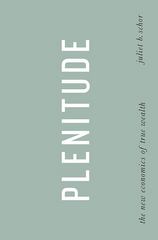Question
(a) Suppose that an agent is offered money: she can choose any dollar amount upto $M. We see that she chooses C({0, 1, ..., M})
(a) Suppose that an agent is offered money: she can choose any dollar amount upto $M. We see that she chooses
C({0, 1, ..., M}) = {M}.
Show by example that this choice can be explain equally well by (i) utility maximization with diminishing marginal utility for money, and (ii) utility maximization with increasing marginal utility for money.
(b) Consider an agent who has to choose how many donuts to eat. He exhibits the choices
C({1, 2}) = {1, 2} and C({1, 2, 3}) = {2, 3}.
Can these choices be explained by (i) maximization of a complete and transitive preference? (ii) satisficing? (iii) regret aversion?
Step by Step Solution
There are 3 Steps involved in it
Step: 1

Get Instant Access to Expert-Tailored Solutions
See step-by-step solutions with expert insights and AI powered tools for academic success
Step: 2

Step: 3

Ace Your Homework with AI
Get the answers you need in no time with our AI-driven, step-by-step assistance
Get Started


